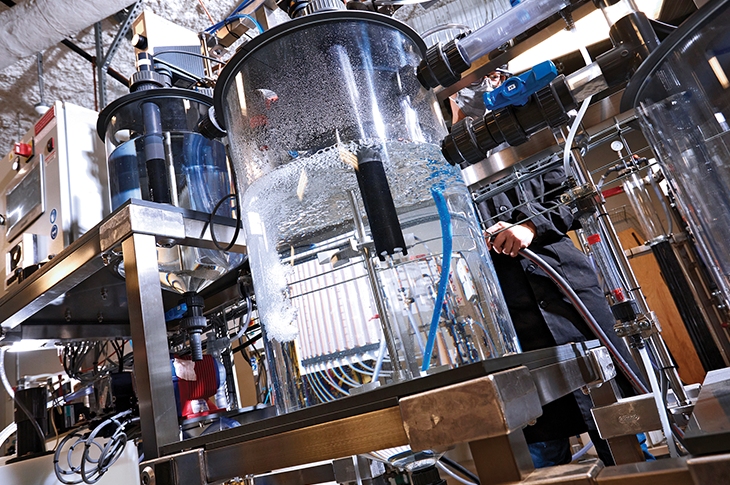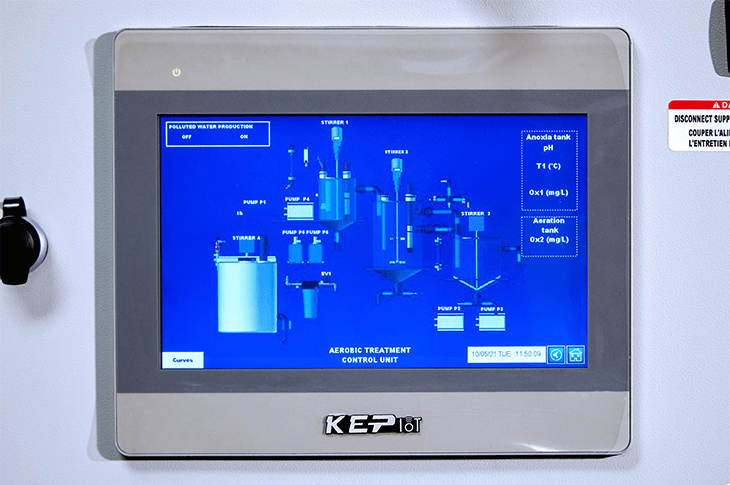Made possible through an anonymous donation, SAIT investment and an ongoing partnership with Spartan Controls, this small-scale treatment plant gives Water Resource Management students big-picture insights into automated processes they’ll use in domestic and industrial labs to address local and global water challenges.
Part of the MacPhail School of Energy’s new $1-million Water and Wastewater Pilot-Scale Treatment Lab, this state-of-the-art equipment simulates the activated sludge process, an automated system that purifies wastewater by introducing micro-organisms to degrade dissolved organic pollutants.
“Students in the Water and Wastewater Treatment Operations certificate program can use this unit to zoom in on critical aspects of the activated sludge process, while other units in the lab let them conduct additional water and wastewater treatment processes,” says Pablo Pina Poujol, Chair of Sustainability with the MacPhail School of Energy. As well, students in the Integrated Water Management Diploma will draw on their experience with this unit as part of their laboratory activities and capstone projects working directly with industry.
Tech on campus

80
The unit can treat samples of approximately 80 litres of synthetic liquid waste prepared in the lab.
DO
"Aerobic" in the unit's name means the micro-organisms it uses need dissolved oxygen (DO) to survive.

STIRRED, NOT SHAKEN
Within the system's aeration tanks — used to supply the DO — a two-blade stirring system mixes the micro-organisms into the liquid waste being treated.
2
The unit uses two probes to test for DO and pH (acidity) levels.

2 + 3 = 5
In addition to the programs listed above, this unit will be used by students in the Chemical Laboratory Technologist, Environmental Technologist, and Chemical Engineering Technologist programs.
8
This is one of eight units custom-built for the lab; a ninth was donated by SAIT's Applied Research and Innovation Services (ARIS).
Behind the scenes
Here's a glimpse of SAIT's Water and Wastewater Pilot-scale Treatment Lab.
This story was originally written for the print version of the Fall 2021 issue of LINK.

Oki, Âba wathtech, Danit'ada, Tawnshi, Hello.
SAIT is located on the traditional territories of the Niitsitapi (Blackfoot) and the people of Treaty 7 which includes the Siksika, the Piikani, the Kainai, the Tsuut’ina and the Îyârhe Nakoda of Bearspaw, Chiniki and Goodstoney.
We are situated in an area the Blackfoot tribes traditionally called Moh’kinsstis, where the Bow River meets the Elbow River. We now call it the city of Calgary, which is also home to the Métis Nation of Alberta.







